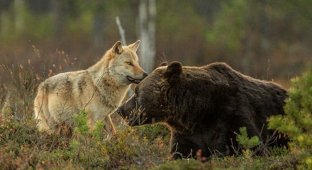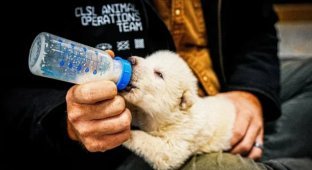How does the hierarchy of wolves differ from that of dogs? (10 photos)
How can you live with wolves? What if I told you that a wolf pack is nothing compared to a pack of dogs? That's where the real trash begins! It's in canine society that there's a strict hierarchy, where everyone fights for a place in the sun by the trash heap. How can man's best friends be more vicious than wild forest predators? We'll find out now! 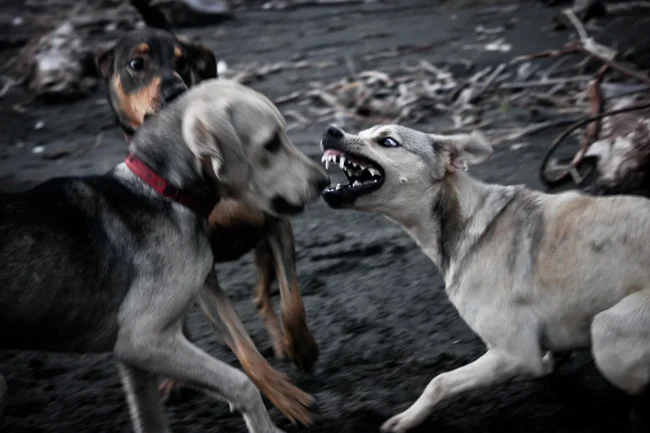
You've come to the wrong place, fashionista with a collar!
What do you imagine a wolf pack to be? Alpha and omega? Bloody power struggles? The clash of fangs and thunderous roars? Forget it. Contrary to stereotypes, a wolf pack isn't a bunch of vicious predators ready to tear each other's throats out. It's a friendly, close-knit family! 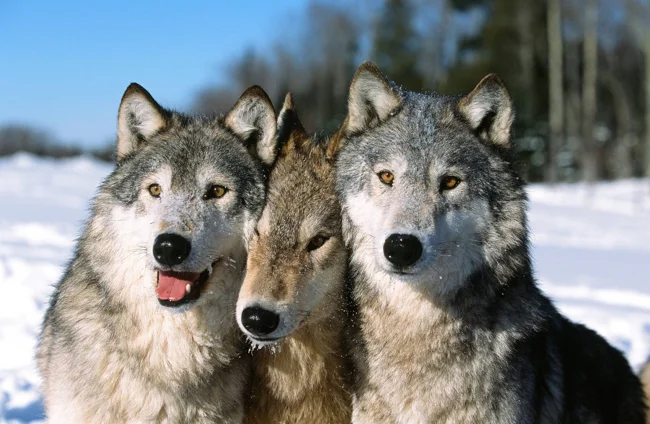
— Son, smile. — Well, mommy, I don't want to take a picture.
It's led by a pair—a mother wolf and a father wolf. Most of the group's members are their cubs, descended from several generations of their offspring. They stay with their parents for a while until they decide to start their own family. They can also remain in the pack for life if they decide they are incapable of independent living. Parents raise their young, teaching them how to hunt and forage for food. They share resources and do everything together. Adults may growl at the young, but only for educational purposes. There is no reason for fighting or serious dominance—wolves understand their place without it. 
Puppies are the pack's most valuable asset. All members of the group care for them. Thanks to this, between 30 and 70% of wolf pups survive to adulthood!
The only people gray wolves treat with fierce aggression are wolves from other packs. An uninvited neighbor who strays into their territory can be killed. But this doesn't mean any stranger is immediately condemned. Sometimes, lone wolves join a pack. Those who haven't found a mate, those who are tired of begging. Such animals will never claim leadership status; they will never raise their puppies. This is the price they pay for the opportunity to live in the pack on equal terms with all other members. 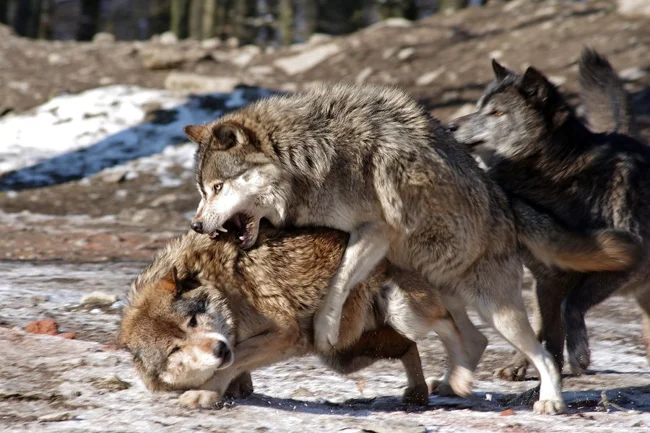
If a stranger appears in the pack, clashes may occur. But, more often than not, they remain bloodless and are merely indicative if the newcomer accepts the established rules of the family they've joined.
So, we've figured out where the dog is buried. Wolves don't have a strict hierarchy. But what about stray dogs? Things are much more rigid there! Because a group of stray dogs is organized according to completely different principles. A dog pack is a gathering of animals unfamiliar with each other. The secret lies in reproductive biology—dogs, unlike wolves, are polygamous; they don't form long-term relationships with their partners. You've seen dog weddings, right? There's no trace of chastity there! 
Oh, that wedding, that wedding, all singing and dancing.
In this situation, a single litter can contain puppies from several fathers. And, naturally, none of them is responsible for the offspring. The female raises the young on her own. If the cubs remain in the pack for several years—until puberty, or even forever—then the puppies leave their mother by 6-12 months. 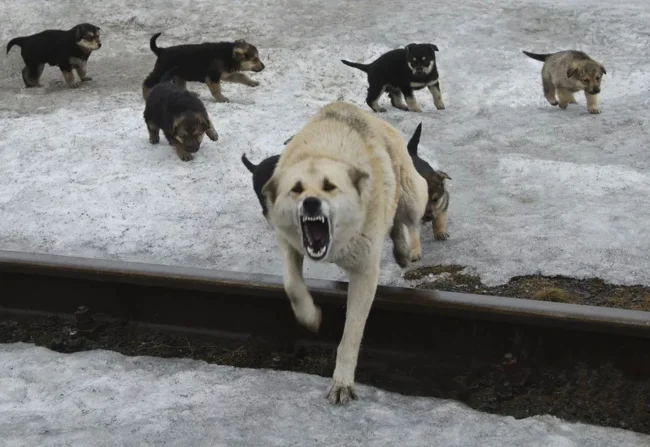
Seryozha, Misha, Vasya, where's our child support?
So, how do dogs organize packs? It's usually related to the availability of food: a convenient garbage dump or a compassionate grandmother with a pot. To protect a place with constant access to food, stray dogs form a pack. Together, they will defend their territory. But such a grouping is radically different from a wolf pack. 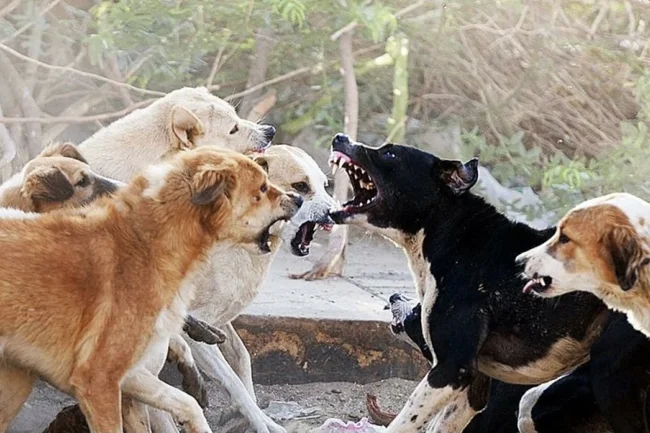
That's our Baba Nyura! And we're protecting her here! And you get out of here!
Firstly, the number of dogs in a single pack can number in the dozens, while the average wolf pack consists of 4-7 members. Secondly, dogs are not related to each other by blood. This means they have less sentimentality towards each other. Animals have to organize themselves into a group and build a hierarchy with complete strangers. Without an established ranking system, they would simply fight to the death. 
Dogs often bare their teeth and appear aggressive. But this behavior doesn't always lead to a fight. Often, a single display is enough to assert or remind a dog of its status.
When a pack is formed, conflict is inevitable—everyone will fight for their place in the sun. This is how a linear order emerges: from the highest echelon—the pack leader—to the lowest. It's the same rank system. Those at the top get the best place to relax, the tastiest sausage from the dumpster, and the prettiest girls in the neighborhood. And those unlucky enough to find themselves at the bottom of the hierarchical pyramid must either accept it or reaffirm their claim to a new, higher status. 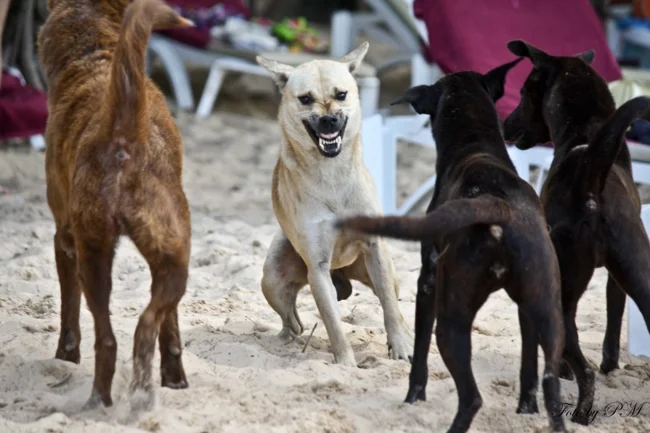
Packs treat strangers from other territories just as harshly as wolves. Domestic dogs can also be considered strangers. Stray packs may view them as potential competitors.
The rules are strict, but that doesn't mean the one who spilled a sea of blood will necessarily rise to the top. In some packs, the most vicious and powerful male can indeed become dominant. The one who holds power with an iron fist. But this happens in a minority of cases! Recent observations indicate that power and respect are more often gained by the most experienced and mature individuals. They are also the friendliest and most sociable. 
Recent studies show that dogs have a linear hierarchy, but it's often the older individuals who lead it. Thanks to their experience, they know how to resolve conflicts and find food. So, this old dog could very well be the leader of the group.
By the way, if you're planning on playing alpha in front of your dog, we advise you not to. Communication between two different species operates according to entirely different rules. You wouldn't fight with your dog over a sandwich, would you? You wouldn't lay claim to his bed or his furry friends? So dominance doesn't work here. To your dog, you can be the master, the leader, but not a competitor for resources.












